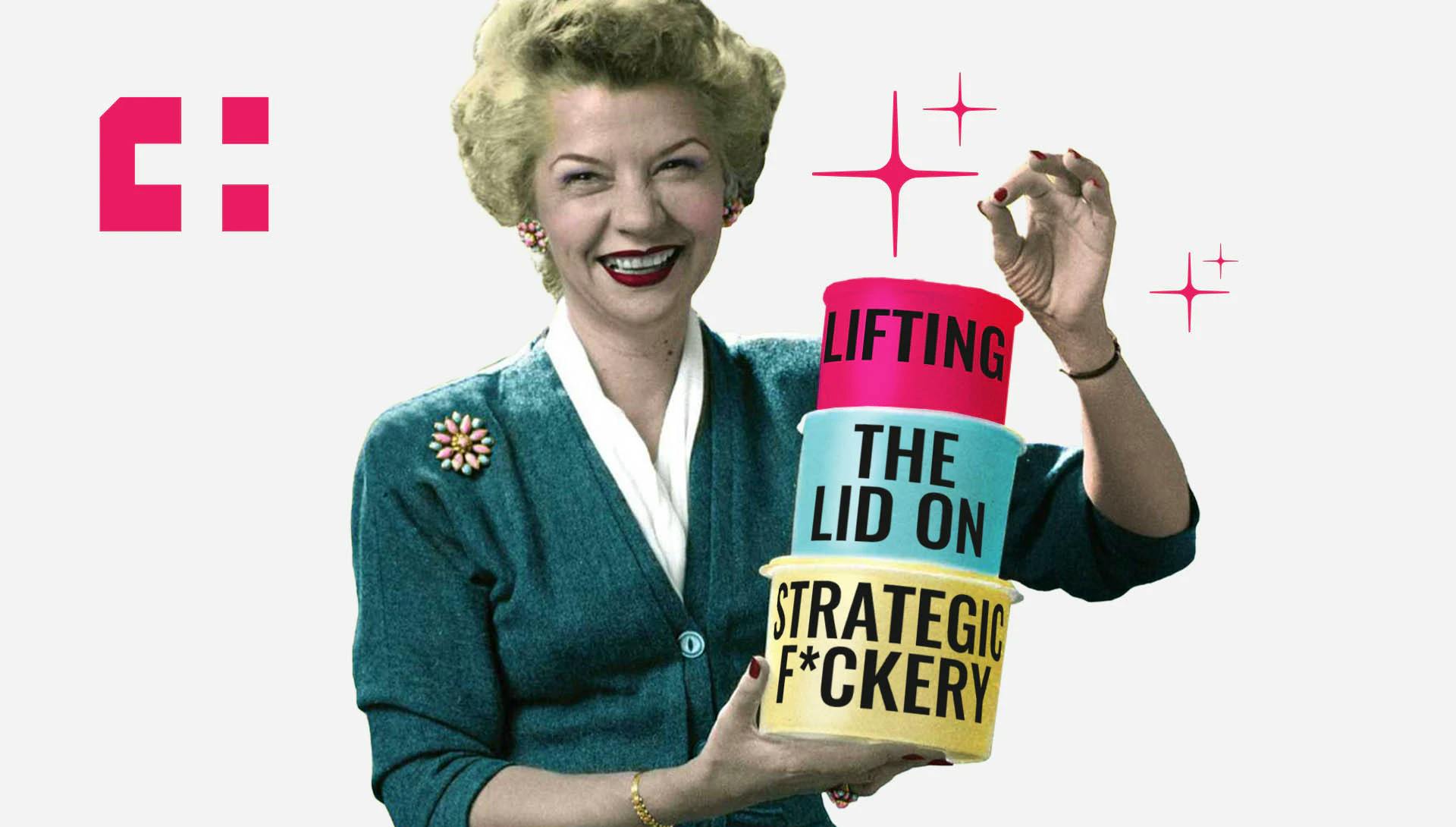Back to Editorial
The Business of Tupperware’s Brand
April 2023
Article

As the 77 year-old firm warns that it could go bust, we open the lid on what might have gone wrong for the heritage brand.
Value
5 years ago their shares were $50 eachIn 2020 they were $1 and bounced back a year later to $30+They did a wokey rebrand, something about “Confidence becomes you”.And today their share price is $1, and they look like they’re about to go bustWhat’s going on?
Celebrate
Firstly, their business is to be rejoiced. Few - if any - define a category. But Earl Tupperware’s does. Part chemist, plastics guru and food preservationist, his idea in the 1940s matched brands like Hoover, Walkman, Lemsip, Velcro, Sellotape, Jacuzzi, Coke etc. Their unique ideas created a market, the product became a brand and all competitors were known colloquially by the same name. Winner.
Dildos
Also worthy of note, Tupperware had a profitable DTC model before it was cool - fronted by an experiential selling model known as “Parties”. Groups of women in living rooms everywhere fawning over rubberised plastics before Ann Summer’s was a thing. Cher-ching.
IP
Then in the 80s/90s most of their patents ran out - and the three things we know about plastics are; abundance, cheap and China - so the competition rode in. A once dominant and monopolistic position now being eroded by looky-likeys. Differences only apparent in price (cheaper) and availability (everywhere). No “Party” admin, half price and no discernible difference. Hmmm.
Oiltanker
And like Nokia, Hoover, Sony, Blockbuster…what do market leaders do in times of disruption - ignore it. So, whilst legacy management, an entitled culture and a strong balance sheet masks problems, the husk began its own hollowing.
Supply chain
Covid didn’t help (share price fell off a cliff). Stuff made off-shore was beyond problematic, and when you “Party sell” and you can no longer “Party sell”…er, yeah. And despite a recovery blip in ’21 (sales via retail customers) the business has been in decline ever since.
Dad at a disco
Over the years ‘things’ have been tried to re-establish its position. New segmentation, younger audiences identified, different routes to market, product evolutions, socials medias and of course colour & styling became a thing…but when brands like Joseph & Joseph exist any attempts to “look cool” end up looking like Dad at a disco.
Over the years ‘things’ have been tried to re-establish its position.
Different routes to market, product evolutions
“Look cool” end up looking like Dad at a disco
Premium brands make promises
Things like scarcity, aspiration, performance, indulgence and, admiration drive price premiums and elasticity. USPs in this context are either utility (we’re different because of xyz) or belief (we stand for xyz). Many have both and buyers line up behind a myriad of these hazy reasons that define choice and reasons to pay more. This stuff is vital, it’s hard to get to and involves more than a piece of shit strapline, a new colour palette and shop in NYC - especially if you’re in the business of super expensive plastic boxes.
I’m no homewares expert, but...
A utility like Tupperware needs tangible newness. The businesses needs new stuff to shout about, Mr & Mrs Miggins - and their younger friends - need new ways to do homey things. The business (and by extension the brand) must set out a new problem it can solve, profitably. Maybe it’s storage, but maybe this is too commoditised, maybe it’s a bigger idea like ‘Tidy’ or “Organisation’. Tupperware haven’t opened a world of new commercial opportunity that exists in the home because they haven’t done their homework.
Insert marketing
Marketing must identify where the business’s commercial opportunity lies if plastic storage tubs are a commodity. How do we grow, where and who with? Seminal questions that have been largely ignored.Tupperware have a fantastic, international team of engineers and designers. A marketing function that could identify needs and insights to brief new product platforms, new ideas, new ways to do stuff in the home.
AND a manufacturing competence to execute on all of it… And yet they appear to have delivered little more than some new f*cking colours and meaningless words.
20% of marketing is comms, FFS. Use the discipline expertly to create stuff people don’t know they want because they couldn’t even dream of them.
It’s what brands do
It’s what Earl Tupperware did in 1946.
Strong brands secure premium pricing, build strong balance sheets and consequently grow market cap.Ultimately though, the business of brand is a paradox. Left improperly managed and under resourced its value erodes. And with the wrapping paper gone, the market will determine its true value. But, when the chips are down, the share price hammered, and its product/service deemed value-less the ‘brand’ is the thing that gets snapped up by PE funds or other companies.
The brand is the business. A unique asset, an up-stream reservoir of cashflow, the moat that helps defend against attacking hoards. And while its value inevitably ebbs and flows, looking after it should be done with more intelligence, greater expertise and trained skills to make them mean more than their competitors.
Sure, others will catch up with utility and function – probably charging less - but understanding marketing’s bell curve will mean the brand will be on to the next thing by then anyway - re-enforcing its leadership position and intangible credentials - so all will be well.
Want more content as and when we publish it? Sign up below.
Want to join our newsletter?
We'll give you a nudge when we publish new reports, articles or work. No AI. No spam. Some swears.